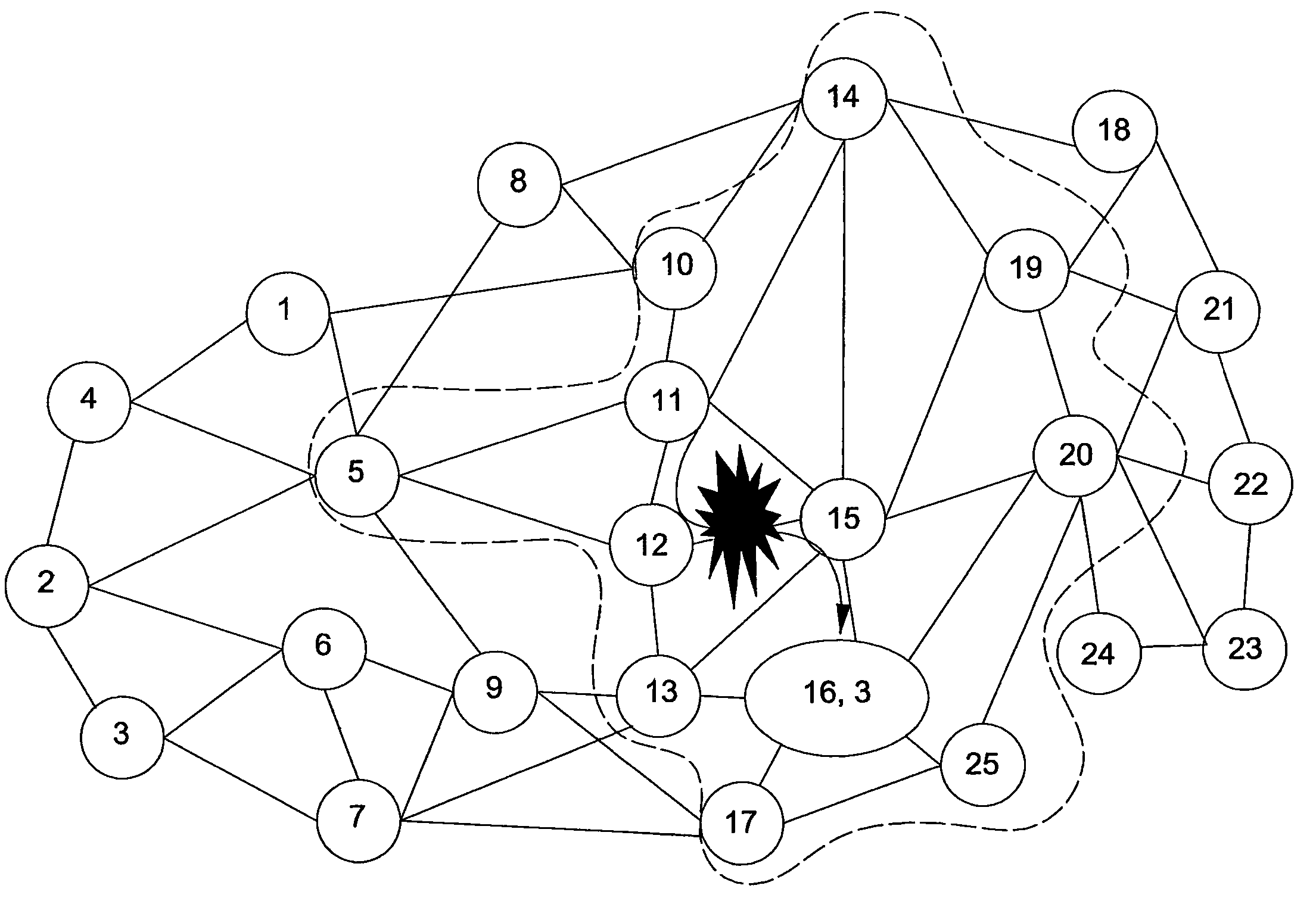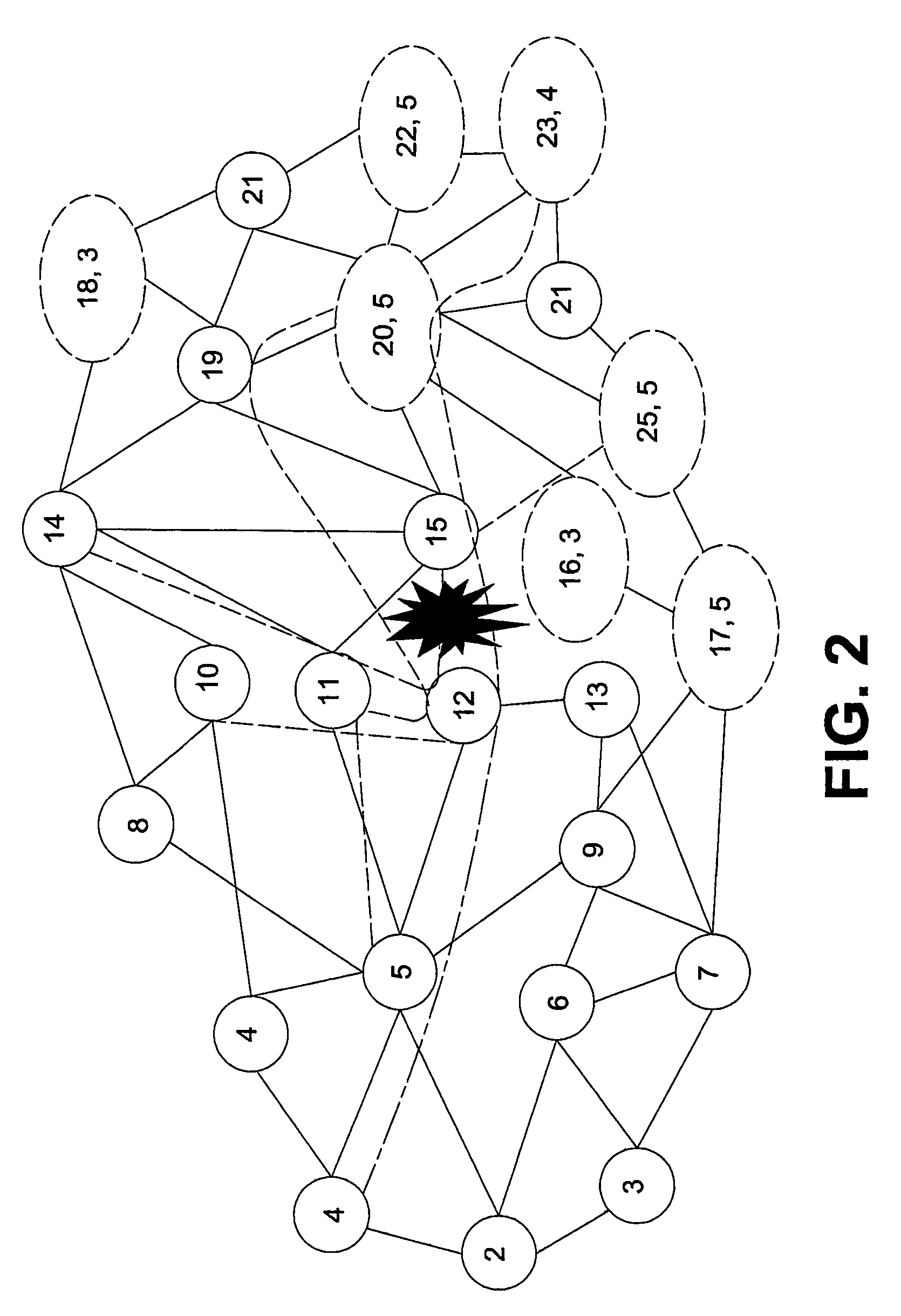Limited perimeter vector matching fault localization protocol for survivable all-optical networks
a fault localization and perimeter vector technology, applied in data switching networks, frequency-division multiplexes, instruments, etc., can solve the problems of increasing affecting the service life of components, and affecting the reliability of fault localization, so as to reduce the computational complexity of localizing faults, preserve high-bandwidth, and high-speed and efficient
- Summary
- Abstract
- Description
- Claims
- Application Information
AI Technical Summary
Benefits of technology
Problems solved by technology
Method used
Image
Examples
Embodiment Construction
[0102]The invention will be described for the purposes of illustration only in connection with certain embodiments. However, it is to be understood that other objects and advantages of the present invention will be made apparent by the following description of the drawings according to the present invention. While a preferred embodiment is disclosed, this is not intended to be limiting. Rather, the general principles set forth herein are considered to be merely illustrative of the scope of the present invention and it is to be further understood that numerous changes may be made without straying from the scope of the present invention.
[0103]The present invention provides a protocol, referred to hereinafter as the Limited perimeter Vector Matching fault localization protocol (LVM). It is assumed that each fiber is multiplexed in the applied network. As such, the number of lightpaths traversing a link could be as large as the wavelength multiplexing degree. In general, once such a lin...
PUM
 Login to View More
Login to View More Abstract
Description
Claims
Application Information
 Login to View More
Login to View More - R&D
- Intellectual Property
- Life Sciences
- Materials
- Tech Scout
- Unparalleled Data Quality
- Higher Quality Content
- 60% Fewer Hallucinations
Browse by: Latest US Patents, China's latest patents, Technical Efficacy Thesaurus, Application Domain, Technology Topic, Popular Technical Reports.
© 2025 PatSnap. All rights reserved.Legal|Privacy policy|Modern Slavery Act Transparency Statement|Sitemap|About US| Contact US: help@patsnap.com



